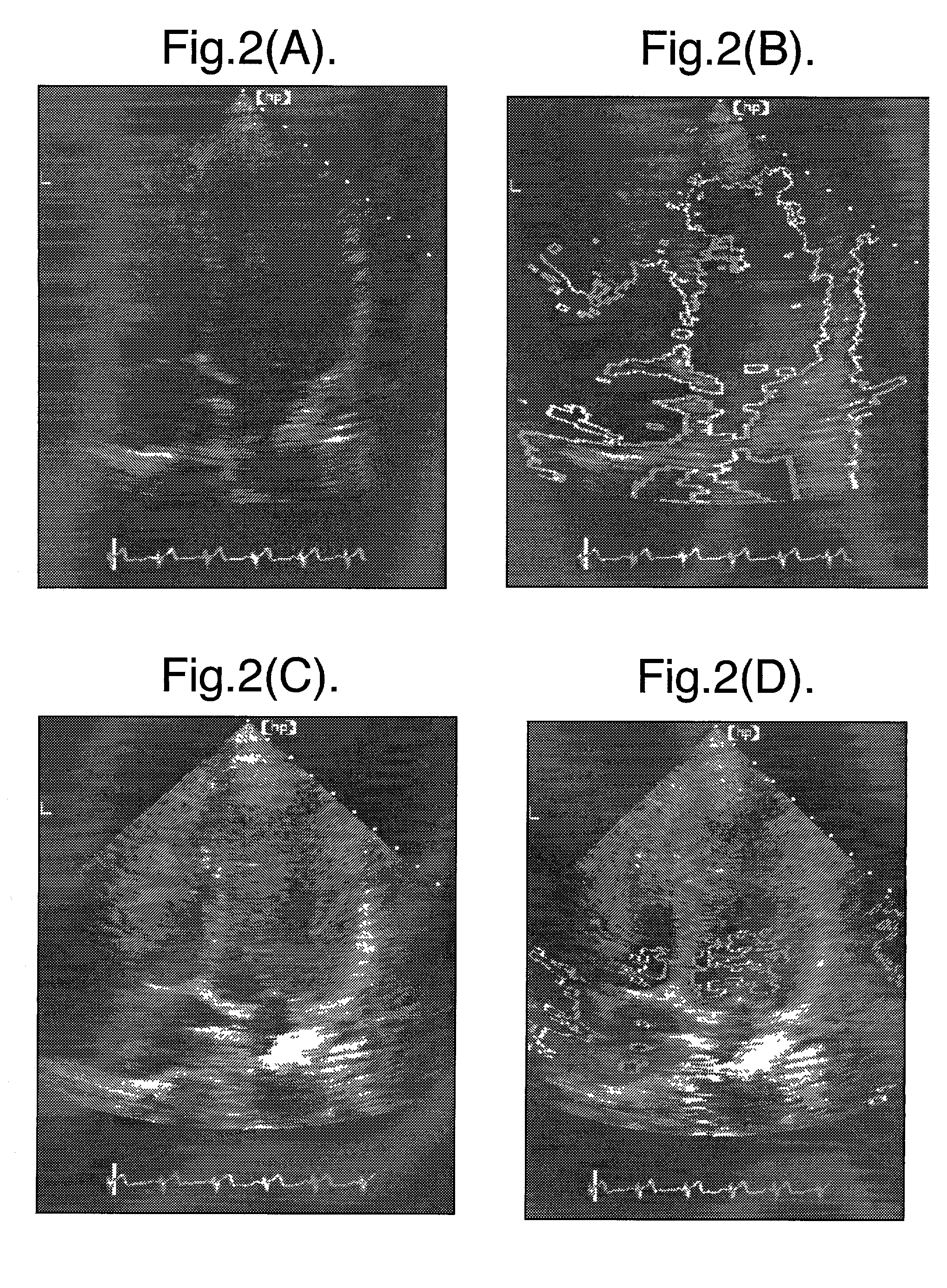Non-rigid motion image analysis
a non-rigid motion and image technology, applied in the field of non-rigid motion image analysis, can solve the problems of difficult image noise, and difficult analysis of non-rigid motion, and achieve the effect of improving the model
- Summary
- Abstract
- Description
- Claims
- Application Information
AI Technical Summary
Benefits of technology
Problems solved by technology
Method used
Image
Examples
Embodiment Construction
[0067]First of all an embodiment of the invention will be described which is for providing clinically significant quantitative data from an echocardiographic image sequence in which the endocardial wall of the left ventricle has been tracked, for instance using the technique described in Jacob et al mentioned above. It will be recalled that the tracking of the endocardial wall can be defined in terms of the movement of the control points of the spline curve as:—
Q=Q0+WPCAXPCA
[0068]Where the subscript “PCA” indicates that the tracking is based on a principal component analysis. The time varying part is the shape-vector X which can be recovered using a pseudo inverse of the shape-space WPCA:—
XPCA=W*PCA(Q−Q0)[0069]where W*PCA represents the pseudo inverse. However, it will be recalled that FIG. 7 demonstrates that it is not easy to place any clinical significance on the time varying components of X.
[0070]With this embodiment of the present invention, however a new shape space can be us...
PUM
 Login to View More
Login to View More Abstract
Description
Claims
Application Information
 Login to View More
Login to View More - R&D
- Intellectual Property
- Life Sciences
- Materials
- Tech Scout
- Unparalleled Data Quality
- Higher Quality Content
- 60% Fewer Hallucinations
Browse by: Latest US Patents, China's latest patents, Technical Efficacy Thesaurus, Application Domain, Technology Topic, Popular Technical Reports.
© 2025 PatSnap. All rights reserved.Legal|Privacy policy|Modern Slavery Act Transparency Statement|Sitemap|About US| Contact US: help@patsnap.com



